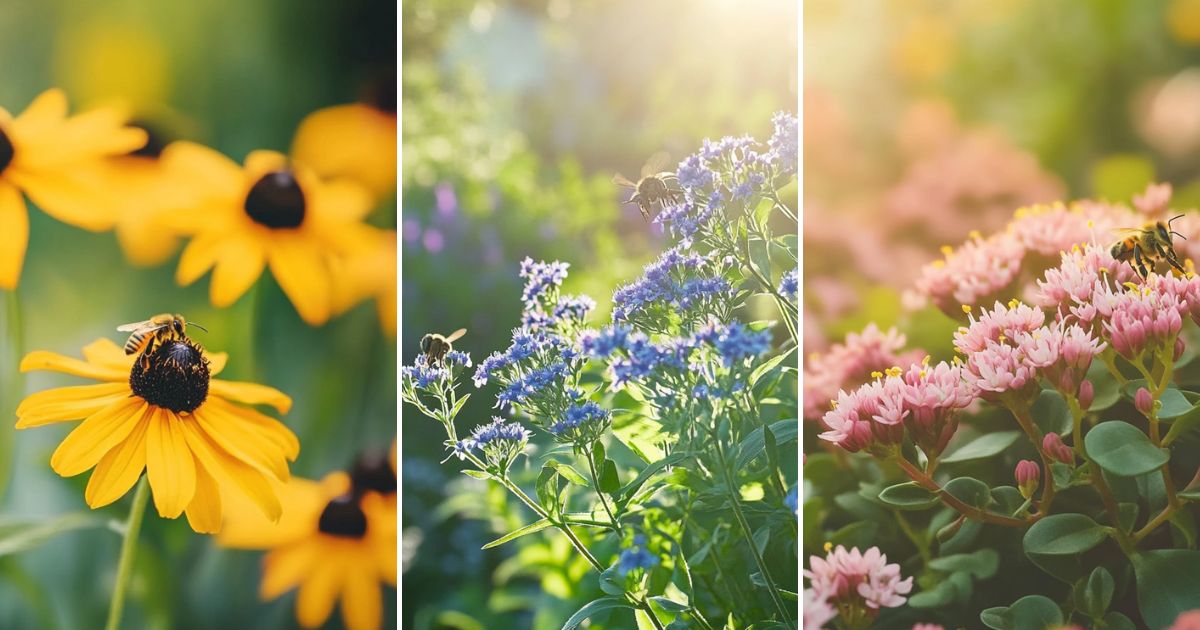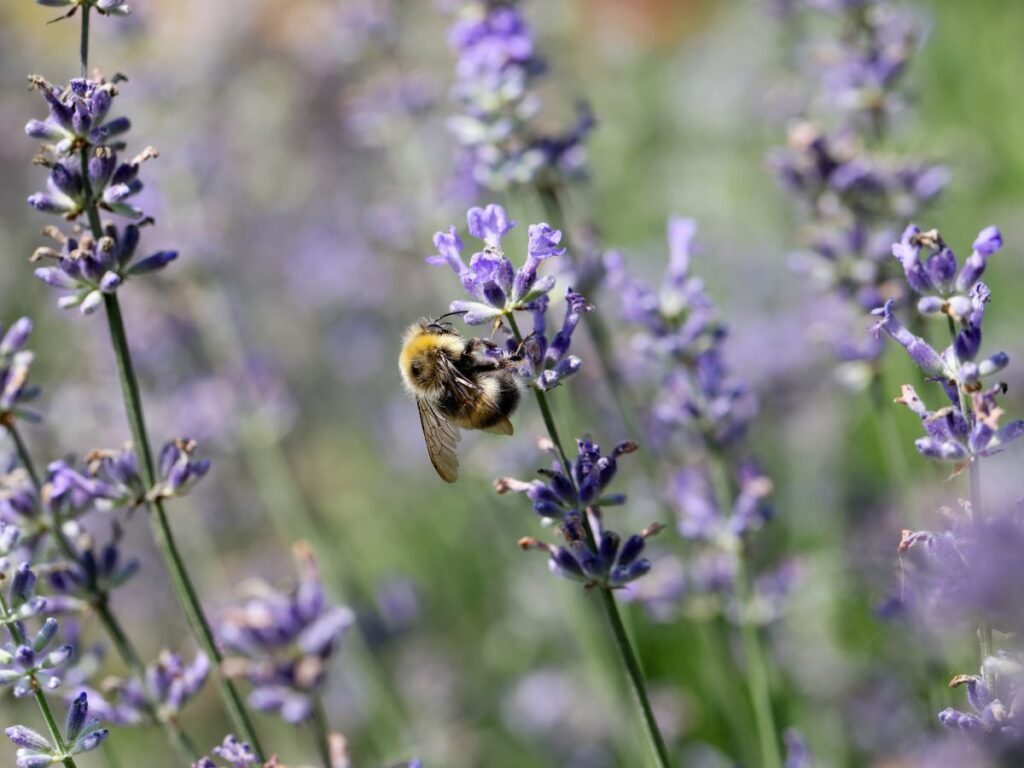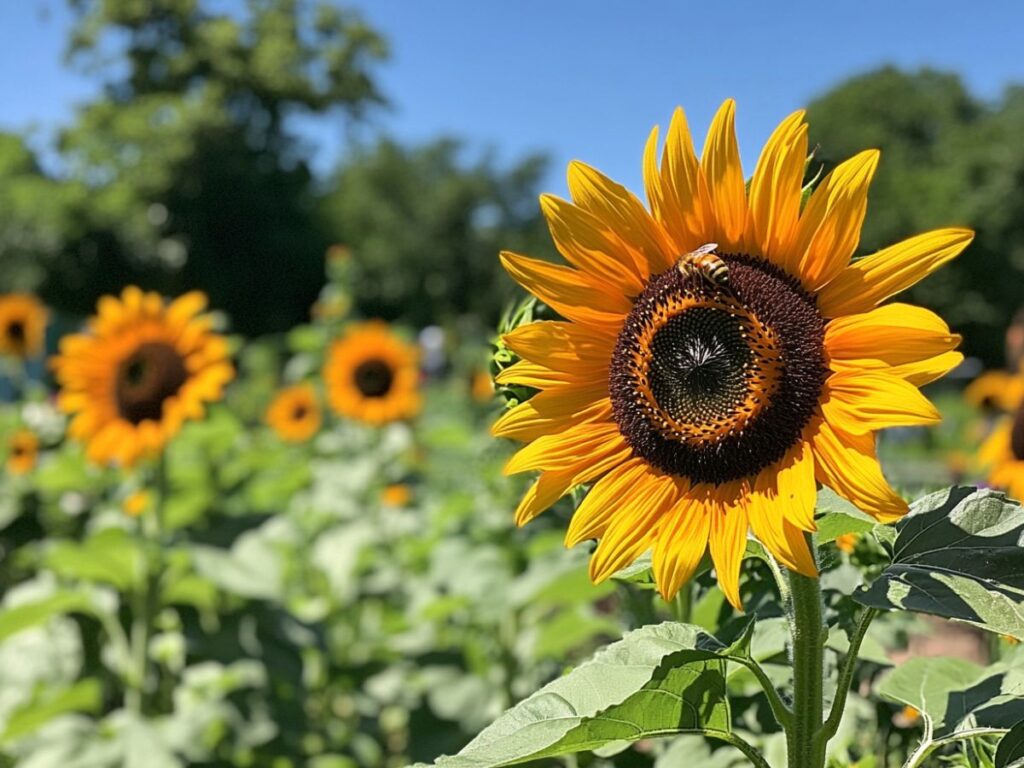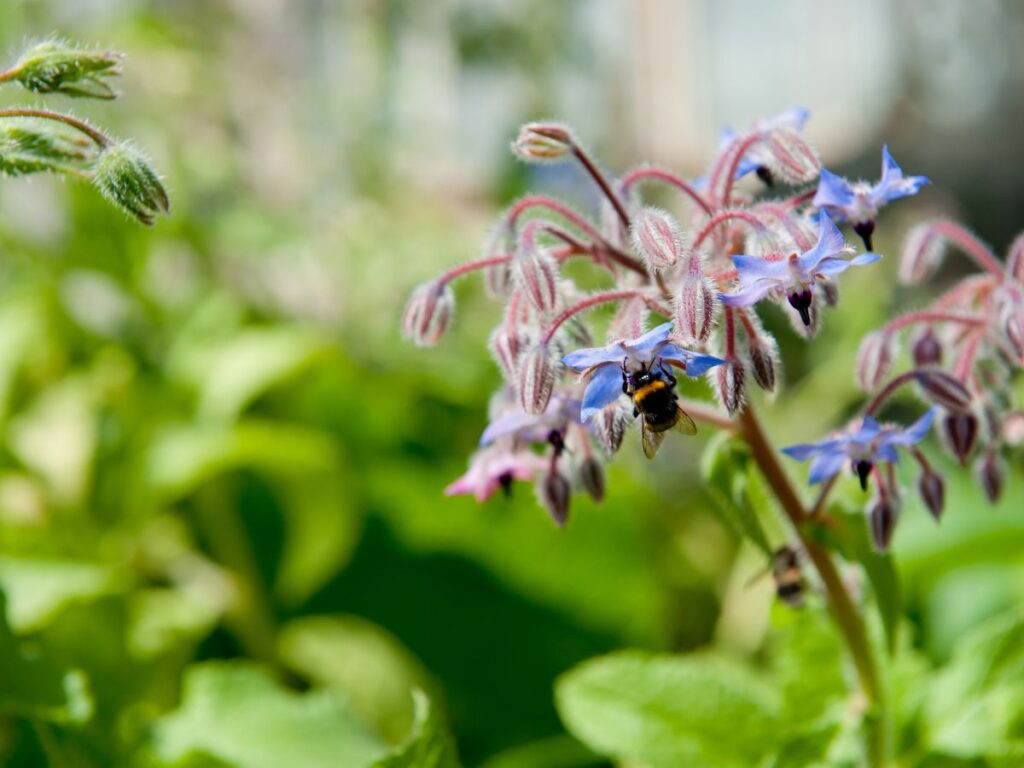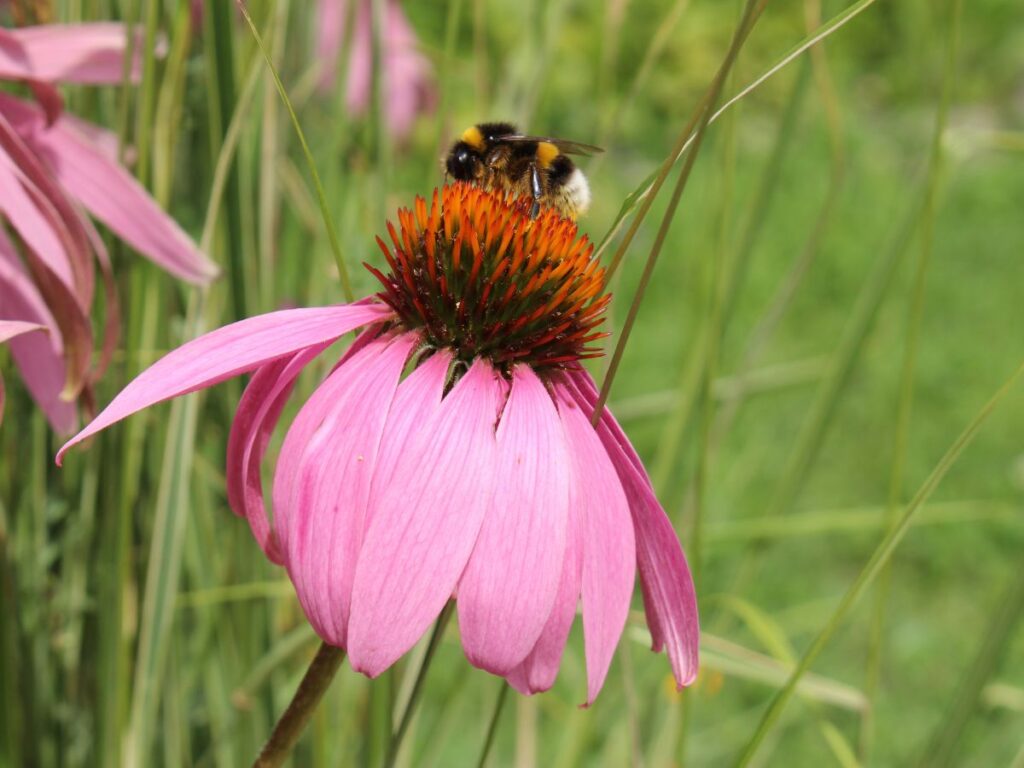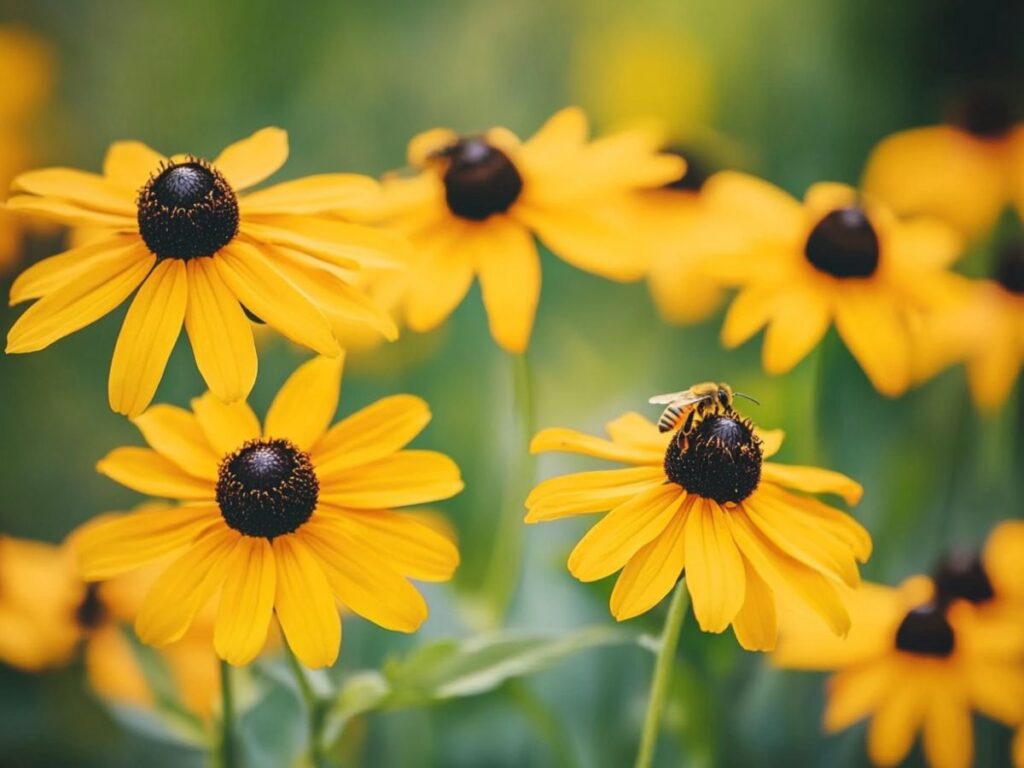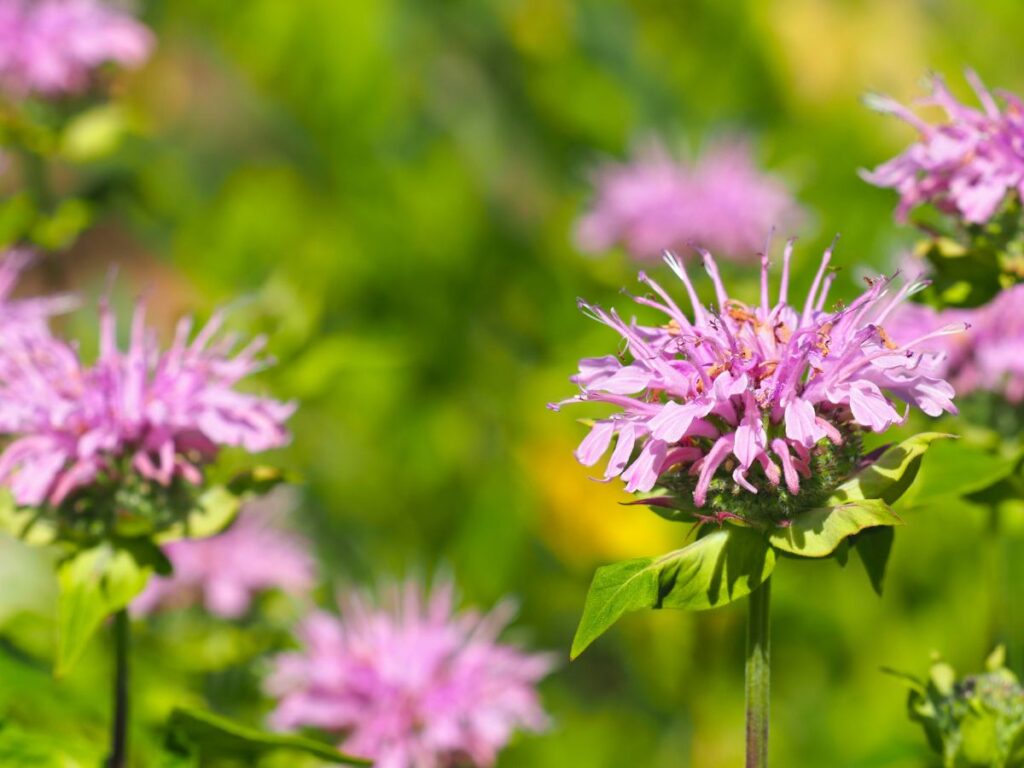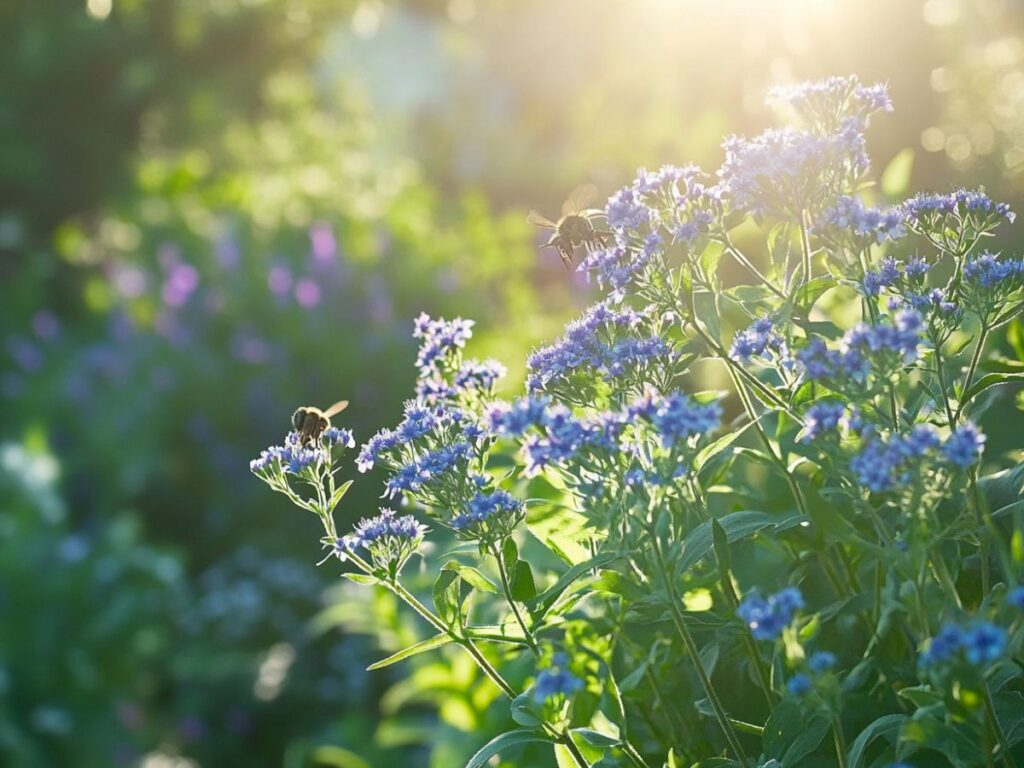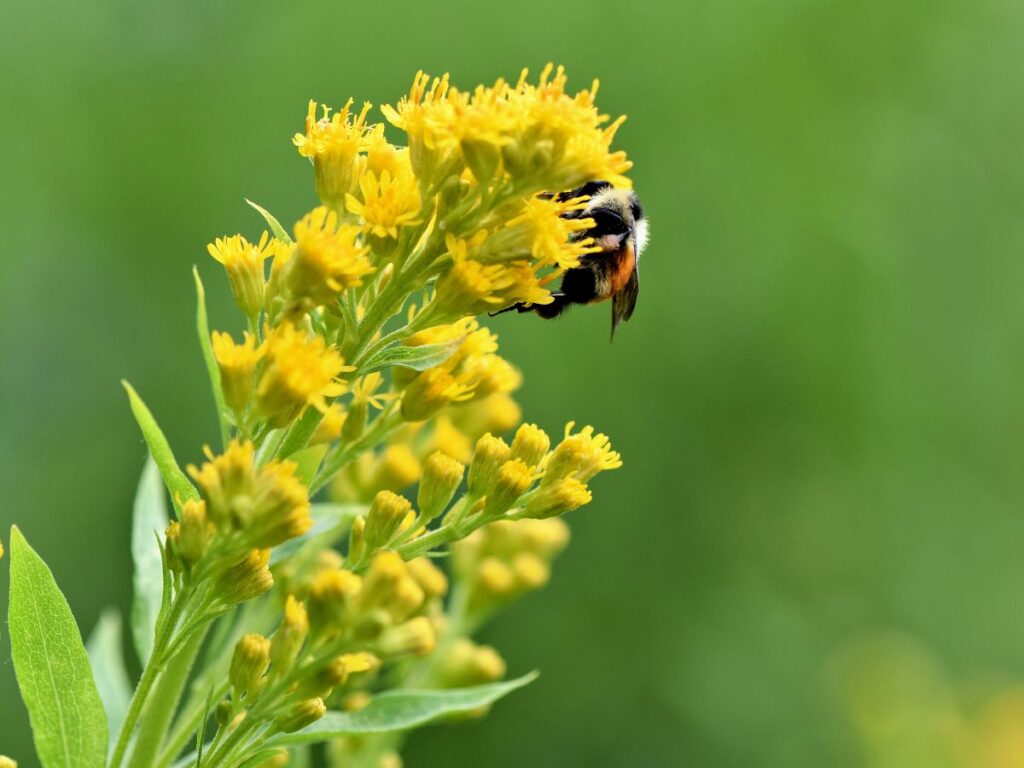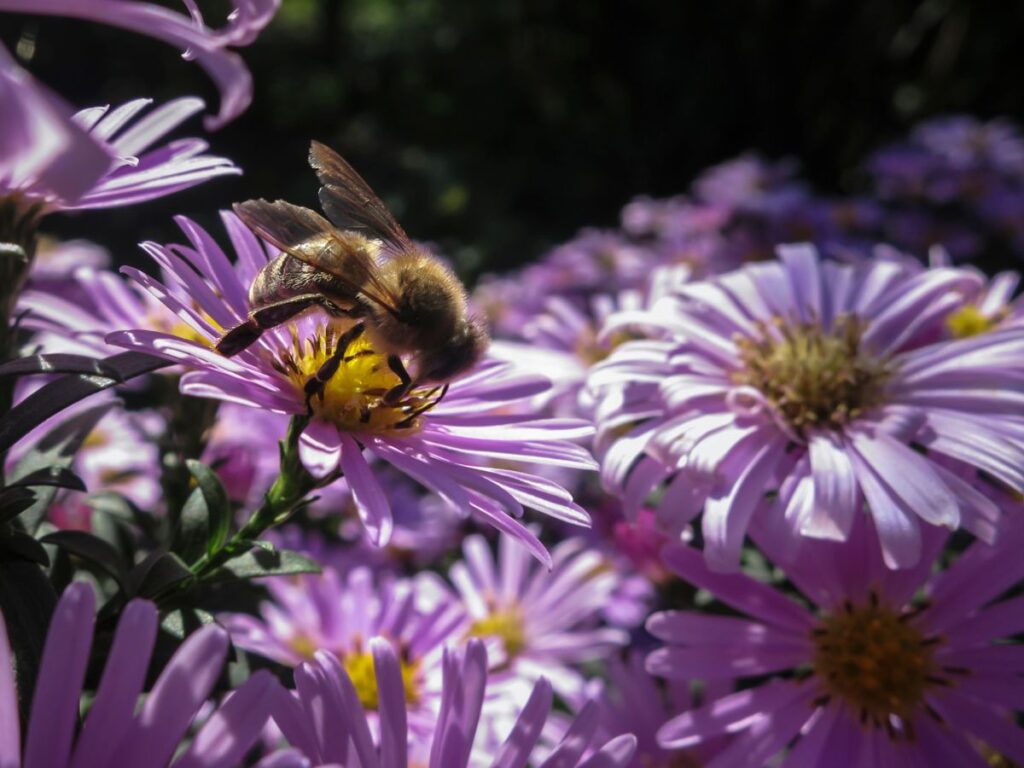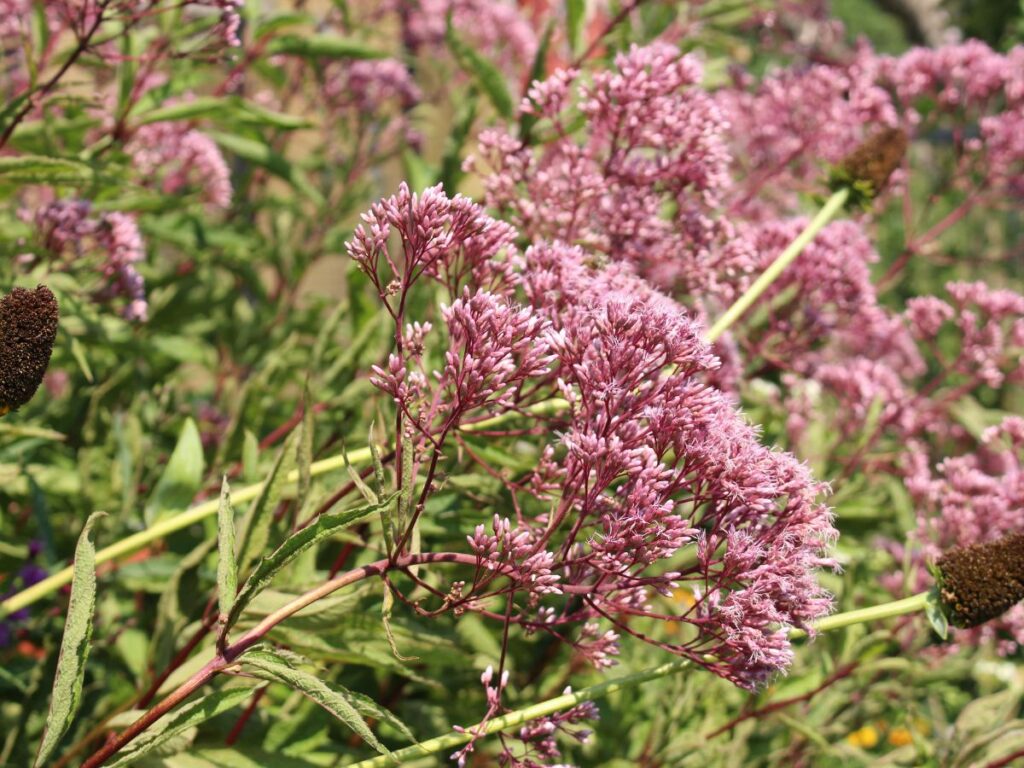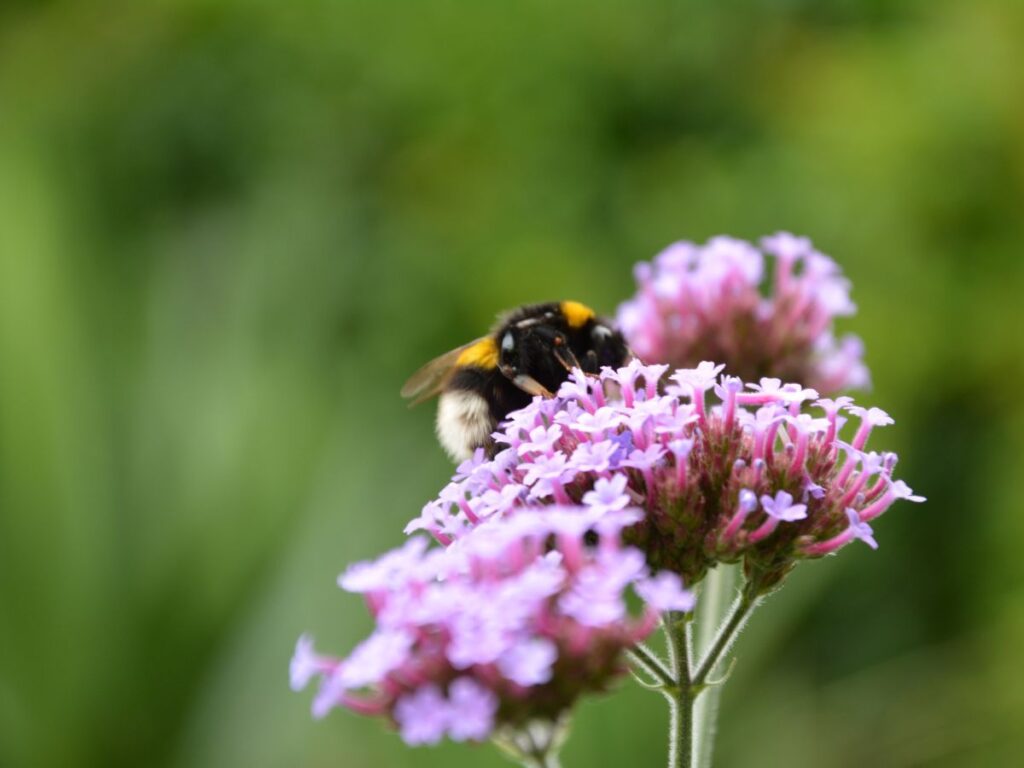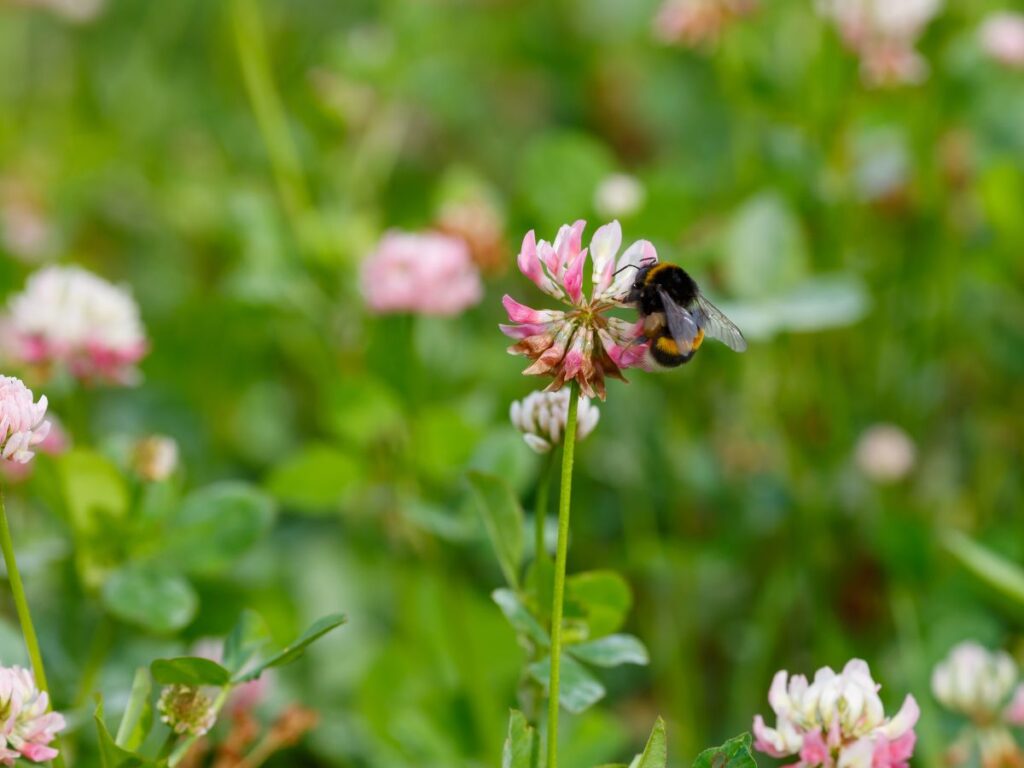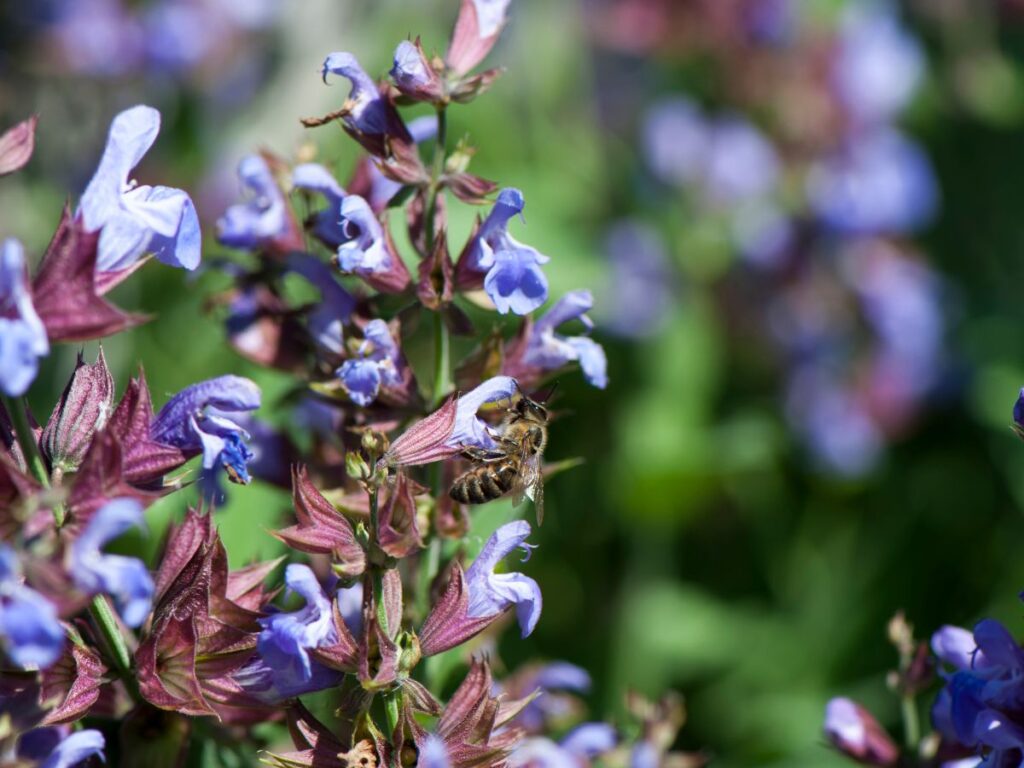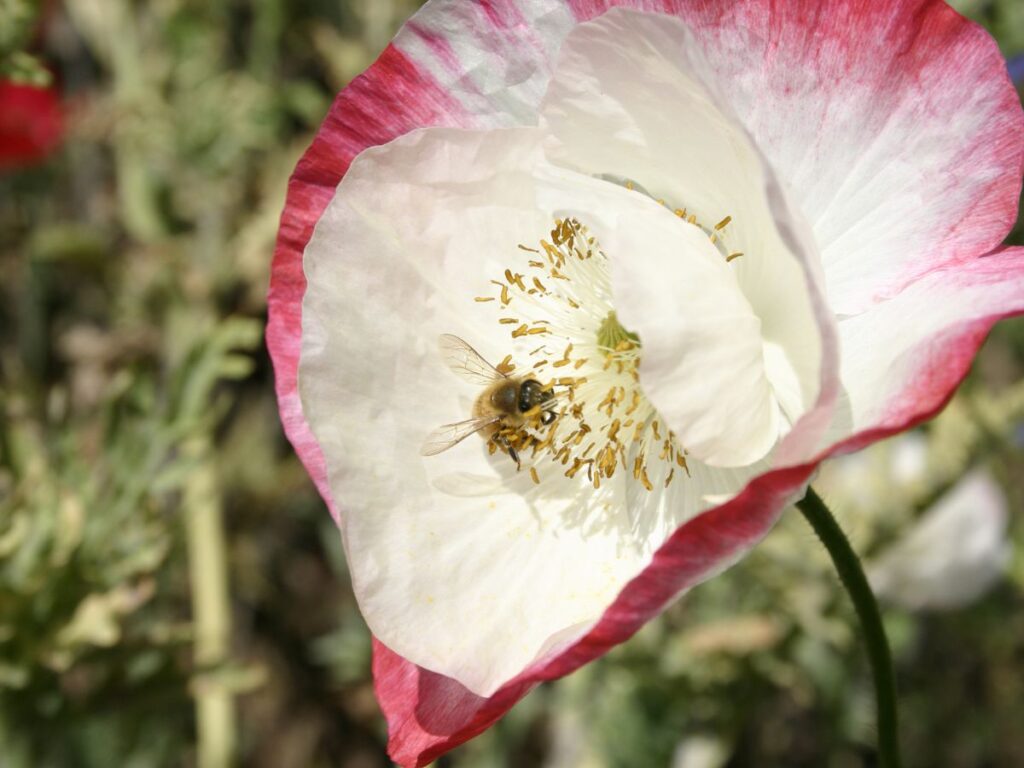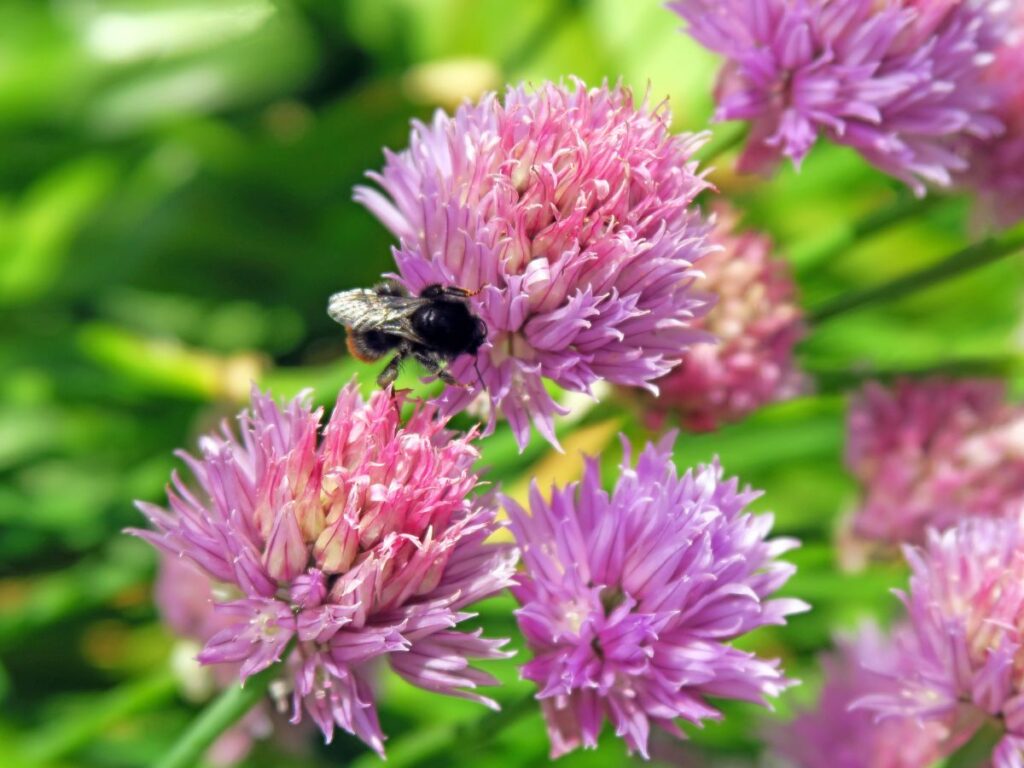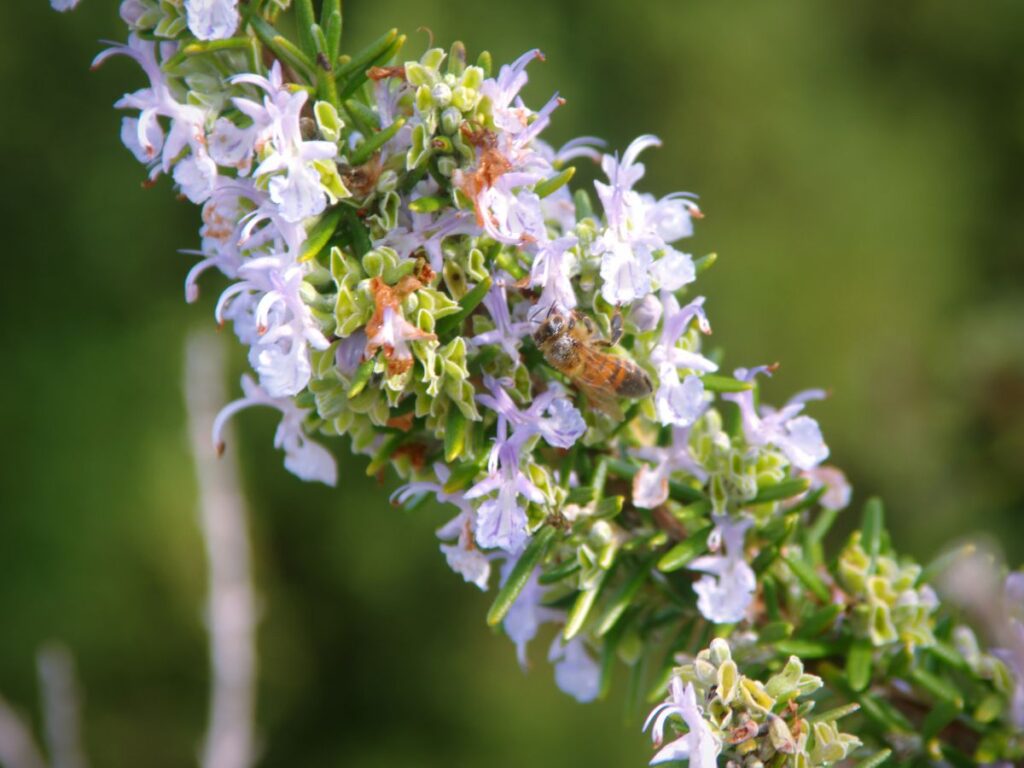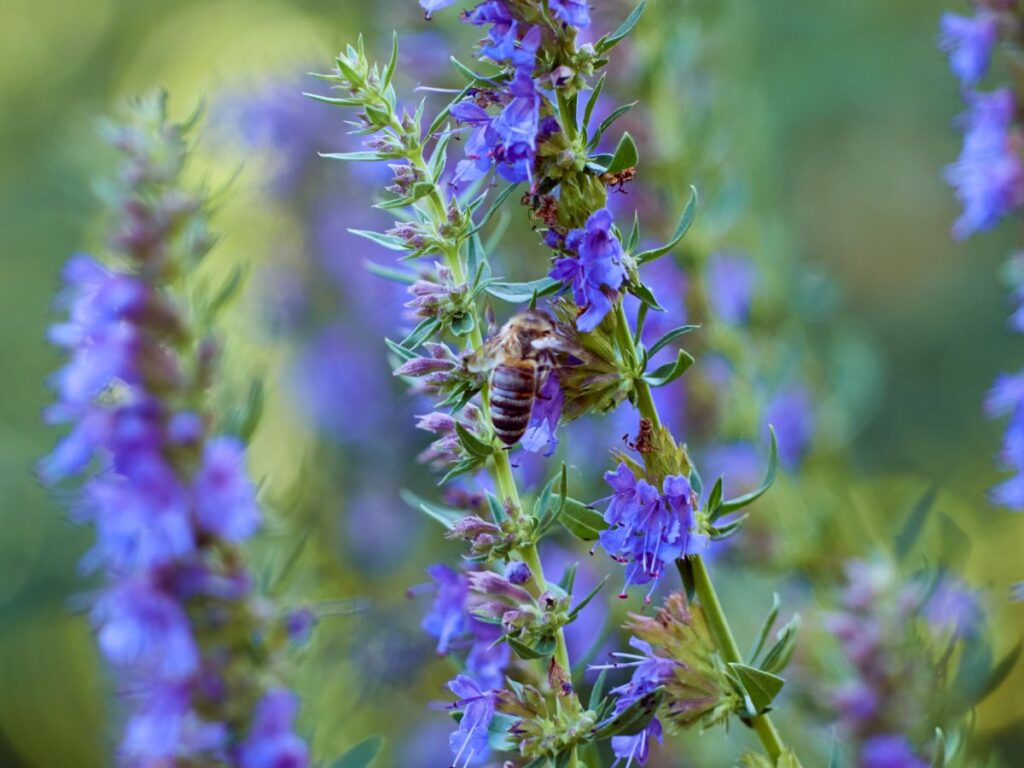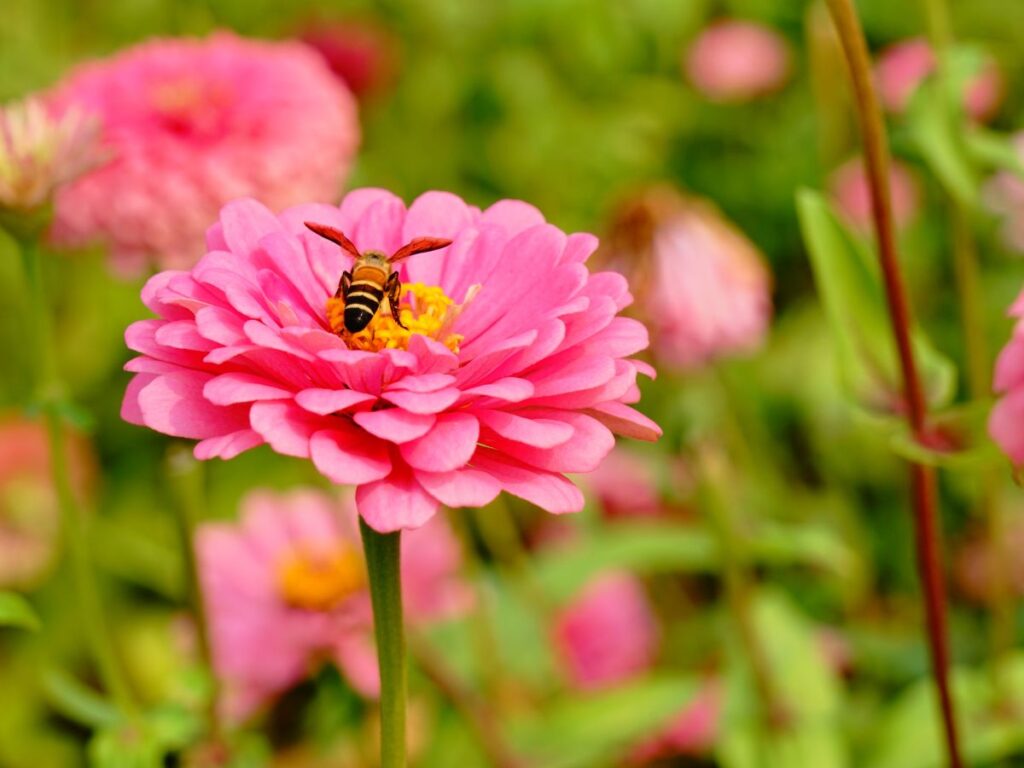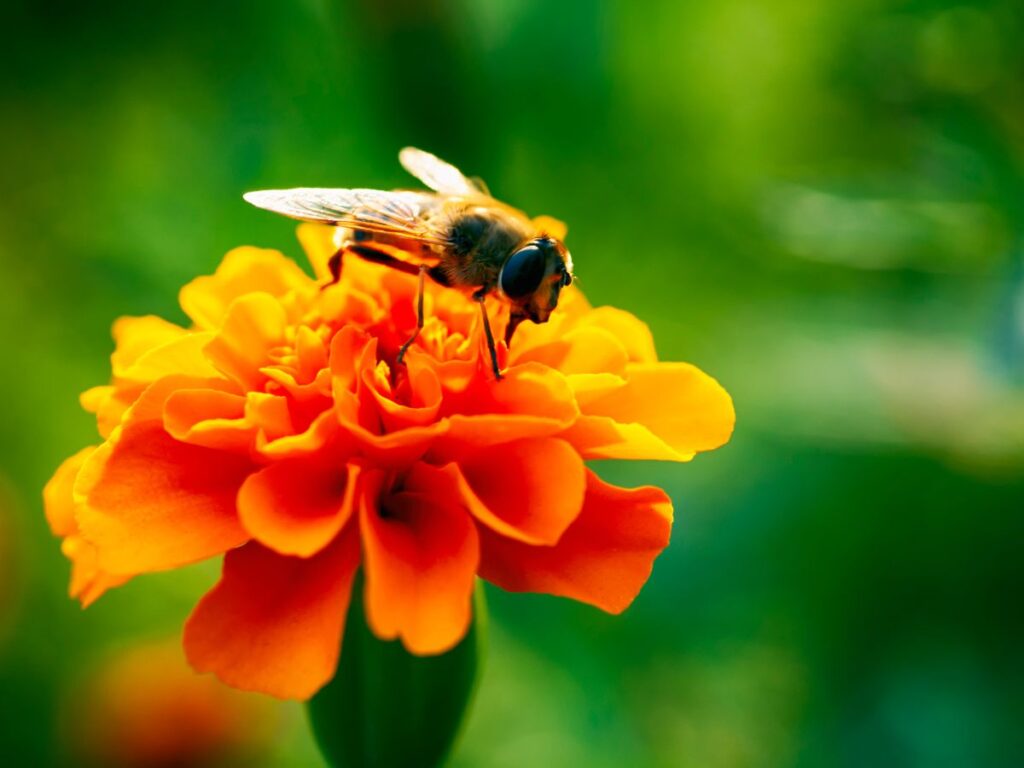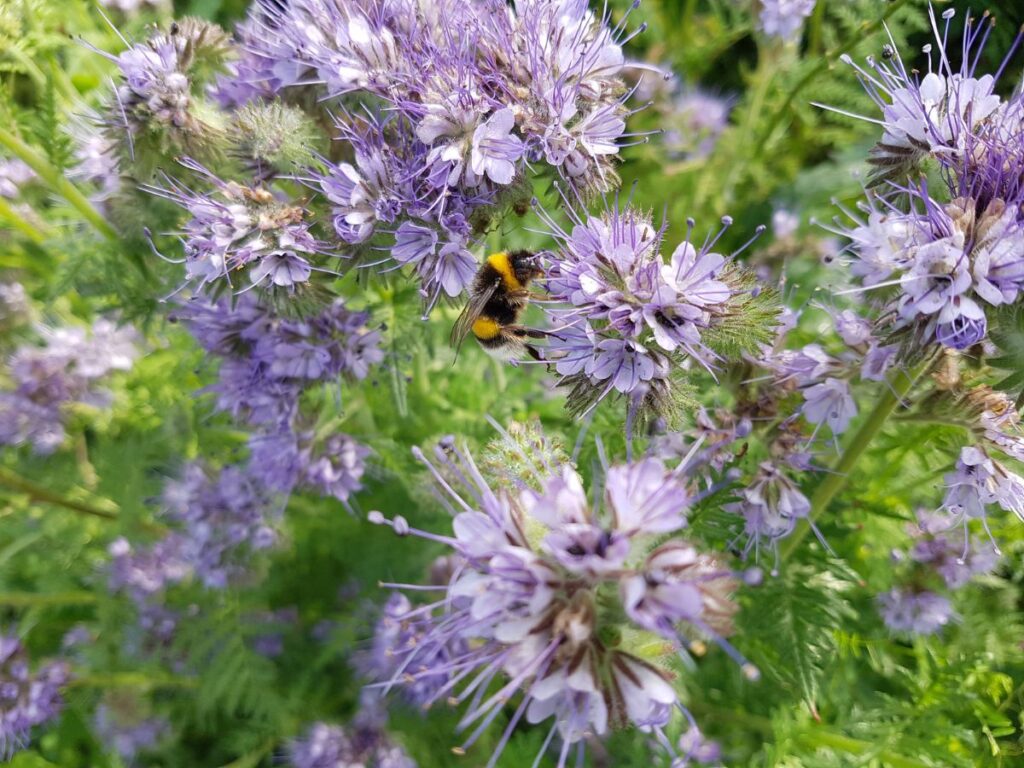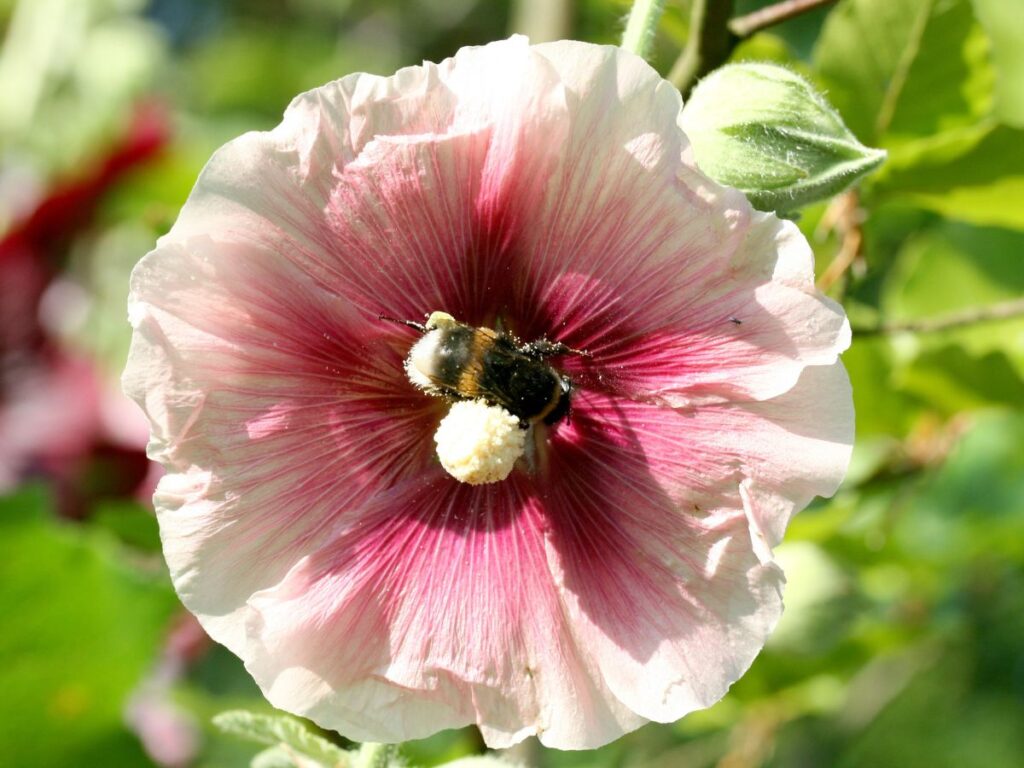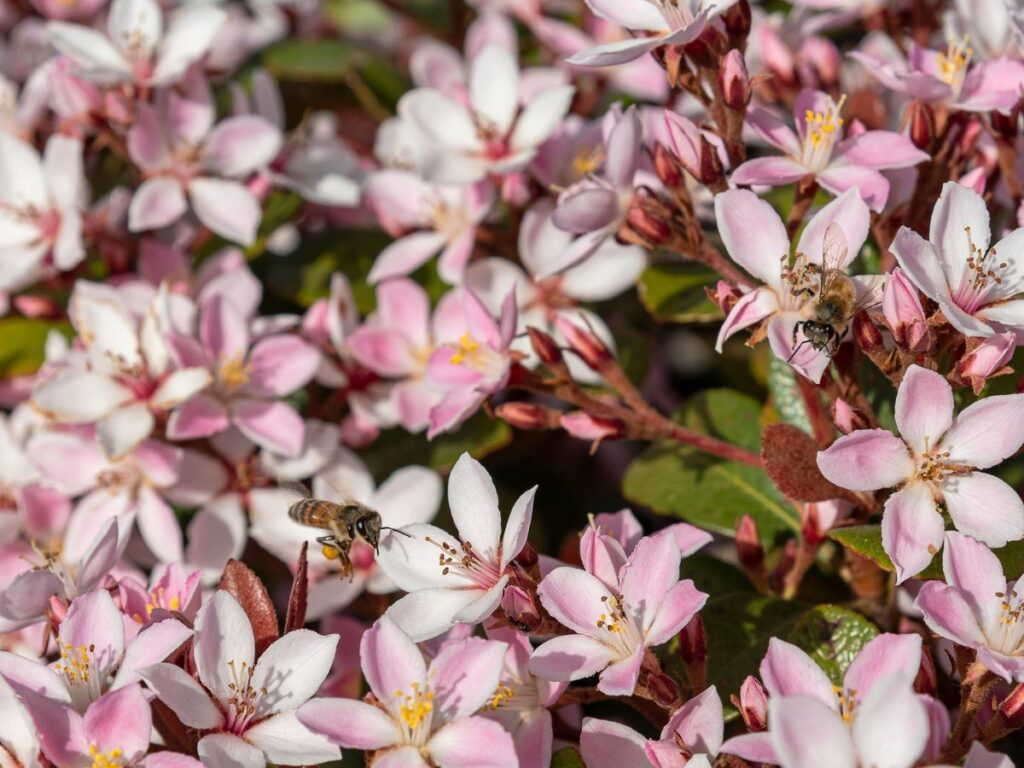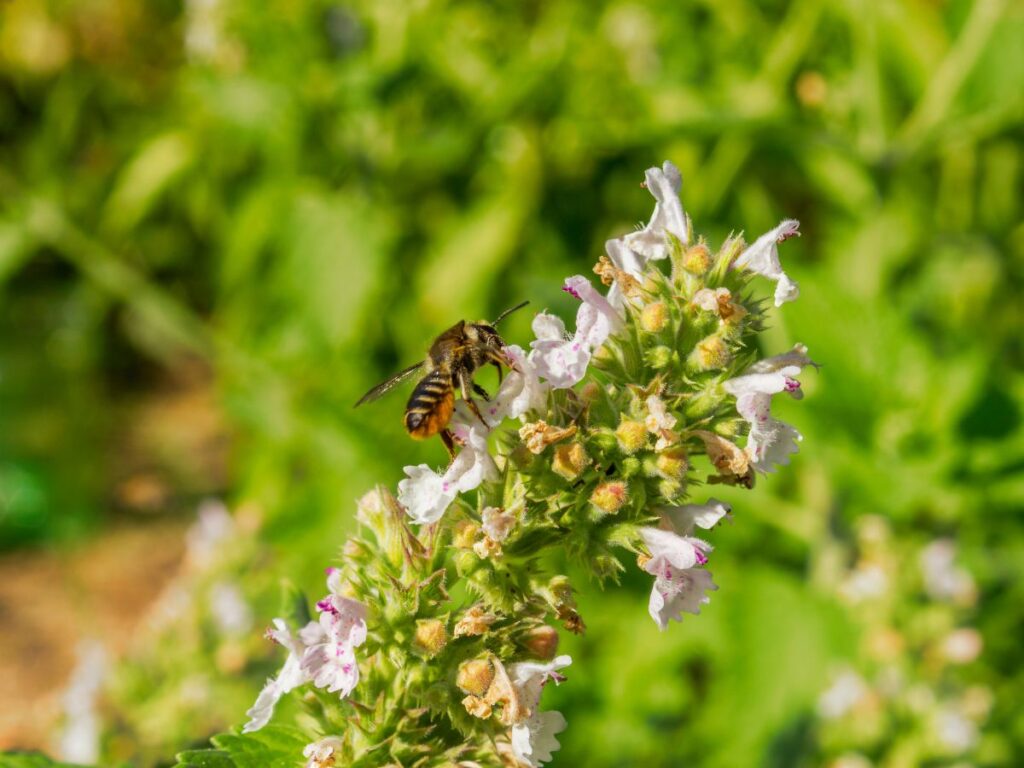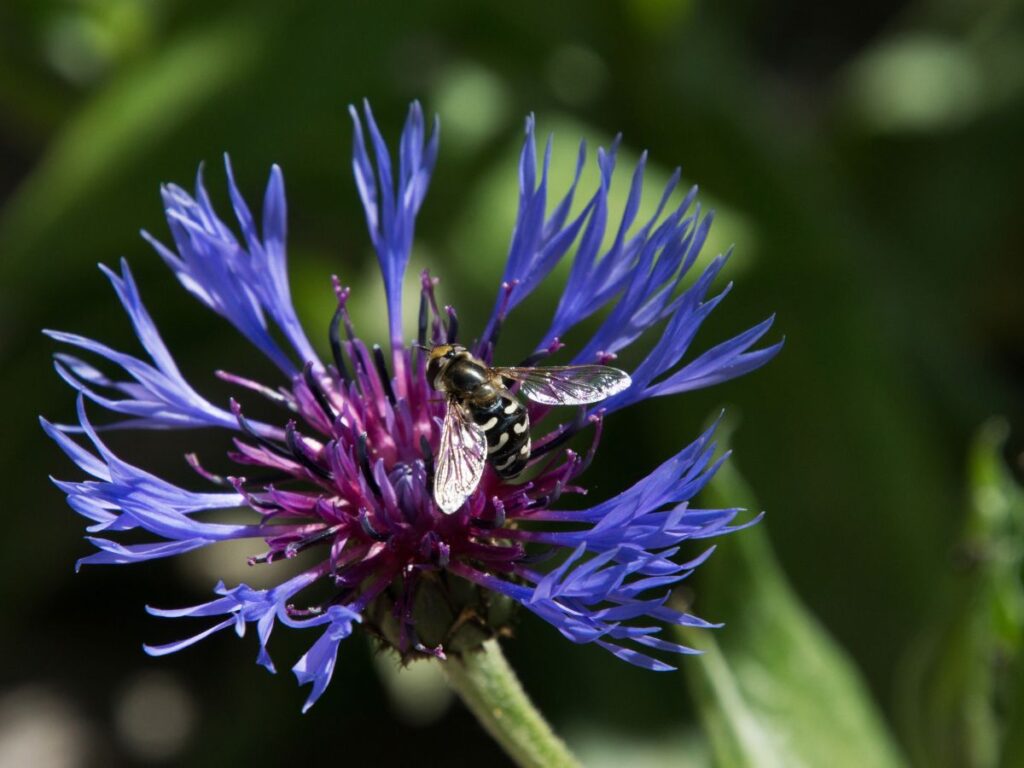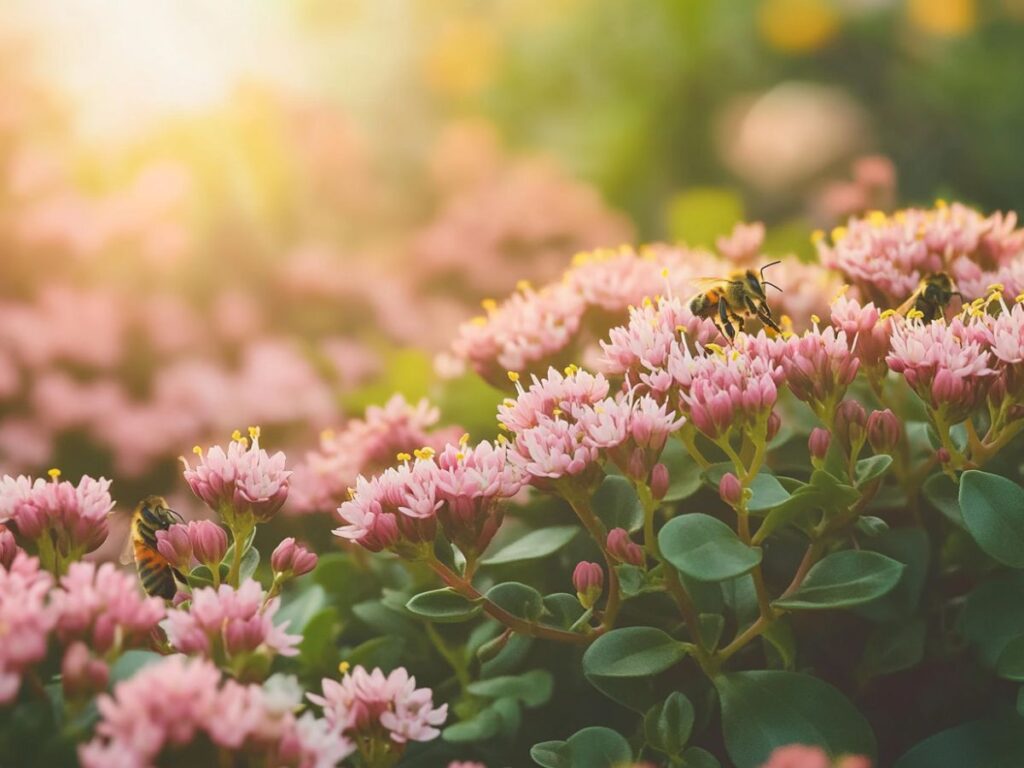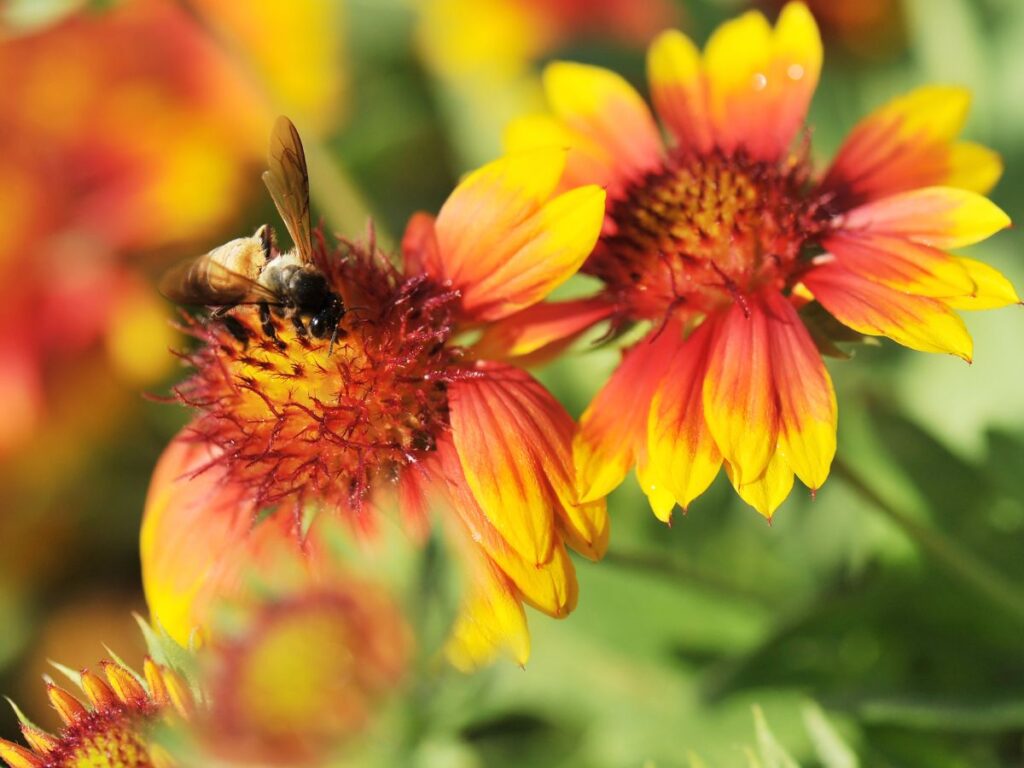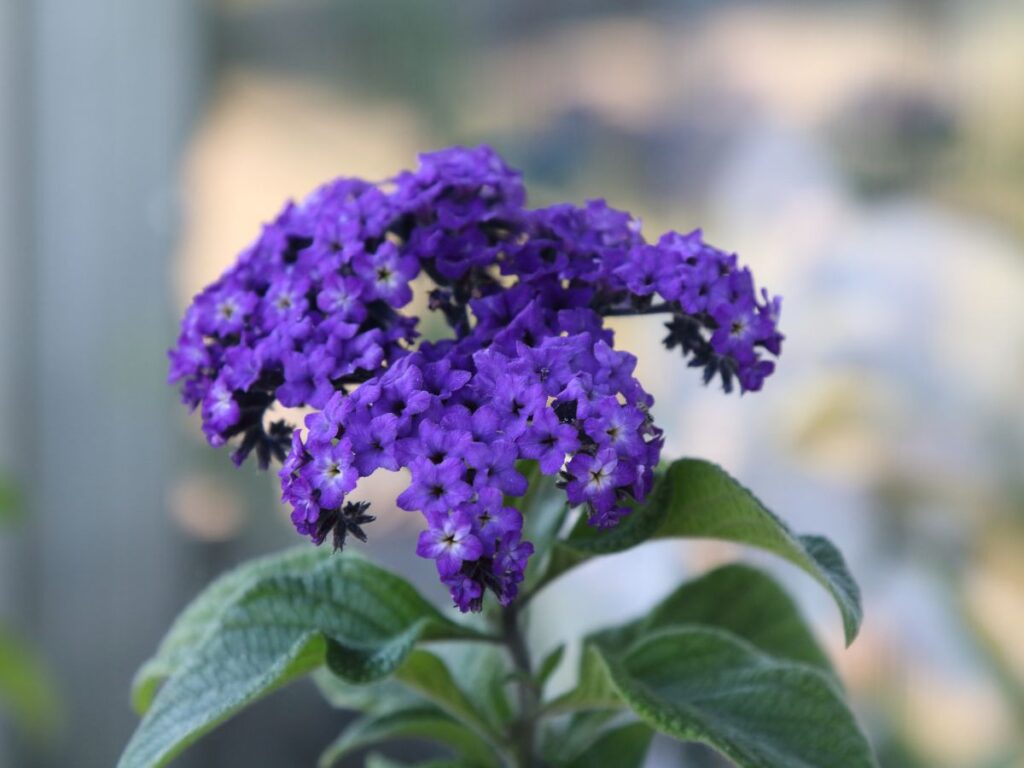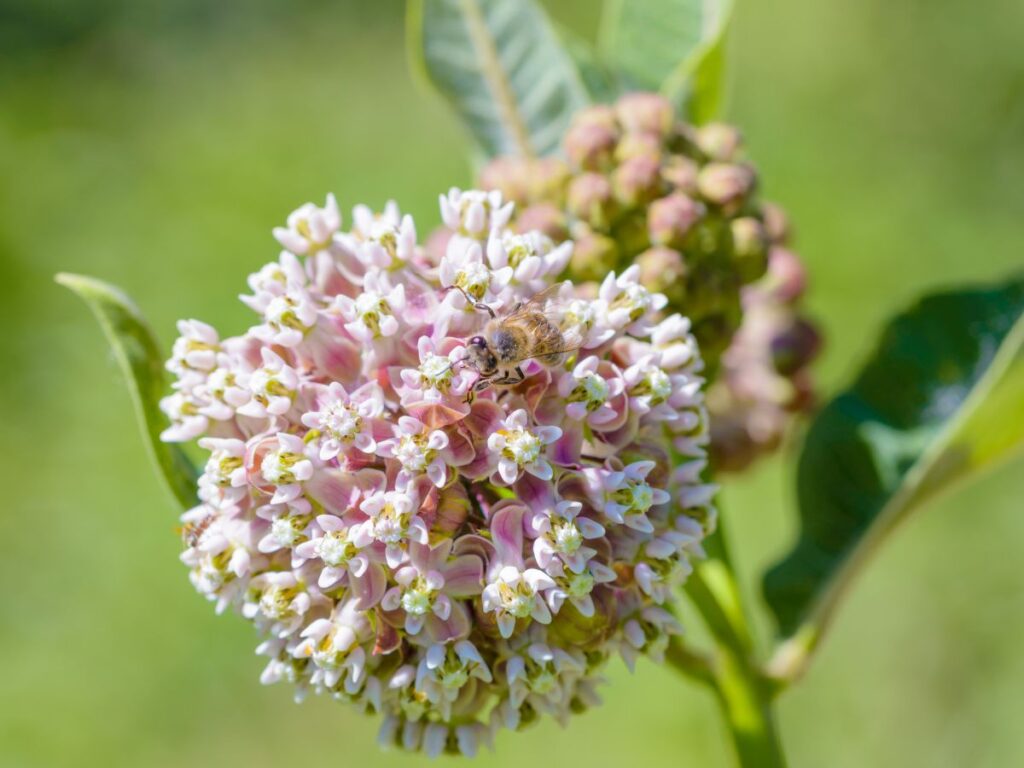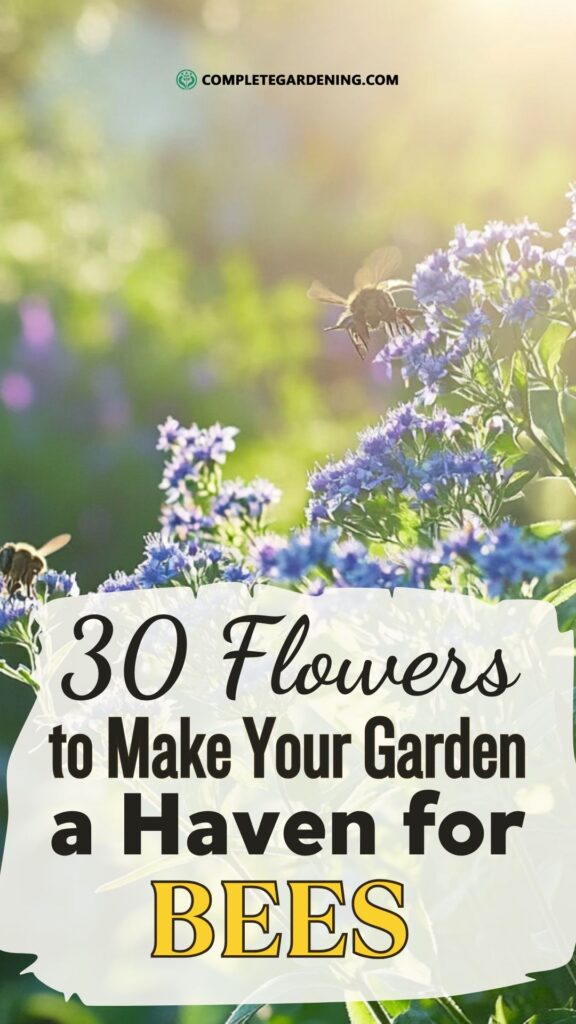Bees play a crucial role in pollinating plants and sustaining biodiversity. But as landscapes have become more urbanized and certain farming practices have changed, bees have seen their natural food sources dwindle.
This is where you, with your garden, come in. Creating a bee-friendly garden doesn’t require a large space, just a commitment to plant flowers that bees love.
Here’s a guide to 30 flowers that will not only beautify your garden but also support your local bee population.
1. Lavender (Lavandula)
Known for its soothing fragrance, lavender is a magnet for bees. Its purple blooms are packed with nectar and pollen, making it an ideal choice for bee gardens. Plant it in a sunny spot, and you’ll see bees buzzing around in no time.
2. Sunflower (Helianthus annuus)
Sunflowers are not only striking but also packed with pollen. Bees love the broad, open surface, which provides easy access to the flower’s nectar. The added bonus? They’re easy to grow and thrive in almost any soil.
3. Borage (Borago officinalis)
Also known as starflower, borage is a bee favorite. Its blue, star-shaped flowers bloom throughout the summer, offering a constant source of nectar. It’s also a self-seeder, so it will keep coming back every year.
4. Coneflower (Echinacea)
Coneflowers come in a variety of colors, but purple coneflower is the most bee-friendly. Its shape makes it easy for bees to access nectar, and it blooms for months, providing a long-lasting food source.
5. Black-Eyed Susan (Rudbeckia)
With their bright yellow petals and dark centers, black-eyed Susans are a hit with bees. These perennials bloom from mid-summer to fall, keeping bees well-fed late in the season.
6. Wild Bergamot (Monarda fistulosa)
Also known as bee balm, wild bergamot is highly attractive to bees. Its tubular flowers are perfect for long-tongued bees, and it releases a minty fragrance that’s pleasant to humans as well.
7. Bluebeard (Caryopteris)
Bluebeard is a low-maintenance shrub that produces clusters of blue flowers in late summer. It’s ideal for bees, offering a burst of late-season nectar that’s much needed as other plants begin to wane.
8. Goldenrod (Solidago)
Goldenrod is a late bloomer, providing food for bees when many other flowers have finished blooming. Its bright yellow flowers attract bees, butterflies, and even some birds.
9. Aster (Symphyotrichum)
Asters bloom in late summer and fall, offering a final feast for bees preparing for winter. They come in many colors and are incredibly hardy, thriving in most climates.
10. Joe-Pye Weed (Eutrochium)
Despite its name, Joe-Pye weed is a lovely plant with clusters of pinkish-purple flowers. It grows tall and attracts a wide range of bees and other pollinators.
11. Verbena (Verbena bonariensis)
This tall, airy plant produces clusters of purple flowers that bees adore. It blooms from summer into early fall, offering an extended source of nectar.
12. Clover (Trifolium)
While often considered a weed, clover is a great friend to bees. Both white and red clover produce small flowers rich in nectar. It’s easy to grow and makes an excellent ground cover.
13. Salvia (Salvia officinalis)
Salvia, or sage, offers spikes of tubular flowers that bees love. The plant’s long blooming season keeps bees coming back, and its drought tolerance makes it perfect for low-maintenance gardens.
14. Poppies (Papaver)
Poppies have a unique, open shape that makes their pollen easy to access. They’re also a good choice for early spring, giving bees a boost as they emerge from winter.
15. Chives (Allium schoenoprasum)
Chives aren’t just for the kitchen. Their purple, ball-shaped flowers attract bees and bloom in early spring, giving bees an early source of nectar.
16. Rosemary (Rosmarinus officinalis)
Rosemary’s fragrant, blue flowers bloom in early spring, providing bees with much-needed nectar at a critical time. Plus, it’s a great herb for the kitchen.
17. Hyssop (Hyssopus officinalis)
Hyssop is a lesser-known plant that produces spiky blue flowers with a long blooming season. Bees are drawn to its rich nectar, and it’s also a hardy plant that can handle various soil conditions.
18. Zinnia (Zinnia elegans)
Zinnias come in a wide range of colors and are very attractive to bees. They bloom all summer long, providing continuous food for pollinators.
19. Marigold (Tagetes)
Marigolds are easy to grow and produce vibrant orange and yellow flowers. Their long blooming season makes them a reliable food source for bees.
20. Phacelia (Phacelia tanacetifolia)
Phacelia is a fast-growing annual that’s highly attractive to bees. Its blue-violet flowers are rich in nectar, and it has a reputation as one of the best plants for pollinators.
21. Hollyhock (Alcea)
Hollyhocks have tall spikes covered in large flowers, which bees find irresistible. These plants are especially suited for cottage gardens and provide a vertical element to any garden design.
22. Thyme (Thymus vulgaris)
Thyme’s tiny purple or white flowers bloom in early summer and are perfect for bees. Like rosemary, it’s a great choice for those who want a dual-purpose herb and bee-friendly plant.
23. Foxglove (Digitalis purpurea)
Foxgloves have tubular flowers that are ideal for long-tongued bees. These tall plants make a dramatic addition to any garden, and their blooms last for weeks.
24. Catmint (Nepeta)
Catmint is a low-growing perennial that produces spikes of blue flowers. It’s a drought-tolerant plant that blooms from spring to fall, providing a reliable source of nectar.
25. Bachelor’s Button (Centaurea cyanus)
Also known as cornflower, Bachelor’s Button is a magnet for bees. Its bright blue flowers are rich in nectar and easy for bees to access.
26. Sedum (Sedum spectabile)
Sedum, or stonecrop, produces clusters of star-shaped flowers in late summer and fall. Its thick, fleshy leaves retain moisture, making it a low-maintenance plant that bees love.
27. Blanket Flower (Gaillardia)
With its red, orange, and yellow petals, blanket flower is a colorful addition to any garden. It blooms throughout the summer, providing bees with a continuous source of nectar.
28. Heliotrope (Heliotropium)
Heliotrope has clusters of small, fragrant purple flowers that bloom in late summer. Bees are drawn to its sweet scent, making it a great late-season addition.
29. Milkweed (Asclepias)
Milkweed is best known for attracting monarch butterflies, but it’s also loved by bees. Its pink and orange blooms provide nectar during the peak of summer.
30. Bee Orchid (Ophrys apifera)
This orchid is named for its bee-like appearance, which mimics a female bee to attract male pollinators. It’s a bit harder to grow, but it’s one of the most fascinating bee-friendly plants you can add to your garden.
Creating a Bee Haven in Your Backyard
These flowers don’t just attract bees; they create an entire ecosystem that supports a variety of pollinators and other beneficial insects. Here are a few tips for cultivating a garden that maximizes its appeal to bees:
Diverse Planting: The more variety, the better. By mixing up flower types and colors, you’ll attract different species of bees and provide them with a range of nutrients.
Plant in Clumps: Bees are more likely to notice large patches of flowers. By grouping plants in clusters, you make it easier for them to spot and navigate your garden.
Go Native: Native plants are often the best for local bee populations because they’ve evolved alongside one another. Check your local garden center for native species or ask a local horticulturist for advice.
Provide Water: Bees need a place to hydrate. A shallow dish with some pebbles for them to perch on works wonders, especially in hot weather.
Avoid Pesticides: This is essential. Even “bee-friendly” plants can become harmful if sprayed with pesticides. Use natural methods to keep pests at bay.
Let Some Herbs Bloom: Many herbs like basil, oregano, and cilantro flower beautifully when allowed to. These flowers are highly attractive to bees, and you still get to enjoy the herbs in your cooking.
Creating a bee-friendly garden is about more than just aesthetics; it’s a step toward supporting biodiversity and helping a vital species thrive.
With these 30 flowers, you’ll have a beautiful garden that’s abuzz with activity all season long. The beauty of it all? This ecosystem of buzzing, fluttering, pollinating creatures makes your garden healthier and your harvests more fruitful.
So, start planting, and watch your garden come alive with the vibrant, essential work of bees.
